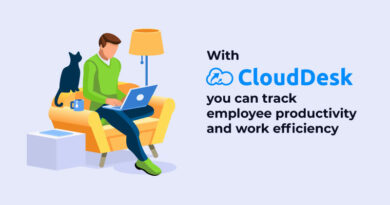An Overview Of Cloud Database And Its Benefits
Databases are transforming as it is moving away from the on-premise setting and heading to the cloud. Cloud-based databases are fast gaining popularity as it is becoming the most efficient way to store, manage, and retrieve all kinds of data – structured, unstructured, and semi-structured by accessing a cloud platform. Although there is another name of cloud database that people know as database as a service (DBaaS), which are managed services, it would still require the services that has a proven track record in database administration for those who choose the traditional cloud database.
All-round accessibility of cloud databases is one of the most prominent benefits because users can access it from anywhere by using a web interface or a vendor’s API. Cloud solutions do away with the need for creating infrastructure and lowers cost as the service provider takes care of auto-scaling, recovery from failure, and automated processes. As data volumes are increasing at a breathtaking rate, and the variety of data is also multiplying, to manage diverse data generated at unprecedented speeds, the cloud database is most appropriate. Cloud databases are a notch above the traditional databases in that it focuses on end-to-end analytics instead of transactional processing of data.
Cloud databases allow users to make use of its translational capabilities for navigating through the data and can translate raw data into the business language to enable users to understand the various sets of views and tables fully. Users can use the power of analytics to drive their business to the next level.
Deployment models of cloud database
Cloud database models are available in two types – Traditional and Database as service (DBaaS).
Traditional cloud database – This type of database is like the conventional database managed in-house but comes with infrastructure provisioning. Organizations intending to use traditional cloud database must approach a cloud service provider for purchasing virtual machine space for deploying the database in the cloud. To control the database, organizations entrust the task to the IT staff or developers who use a DevOps model. Database management is the responsibility of the organization.
Database as a service (DBaaS)–In this arrangement, the cloud service provider offers a fee-based subscription to organizations interested in using the database. In exchange, the service provider undertakes several real-time tasks related to administrative, operation, maintenance, and database management. The service provider creates the infrastructure for running the database by using automation for provisioning, scaling, backup, security, patching, high availability, and health monitoring. Organizations derive maximum value for DBaaS based on software automation that does away with the need for hiring a database administrator services of RemoteDBA.
Benefits of Cloud database
The benefits of cloud databases are much like that of the cloud services in general.
- Improved innovation and agility – Setting up a cloud database takes minimal time, and so also its de-commissioning. It speeds up the process of testing and validating as well as operationalizing new business ideas very fast. Organizations can abandon the project whenever they want and turn to the next innovation.
- Reduced risks – Cloud databases offer several opportunities for reducing business risks, especially when using DBaaS models. By using security best practices, cloud service providers can minimize human error, which is the primary reason for software downtime. Due to automated high availability features and SLAs (service level agreement), downtime is almost non-existent that helps to avoid revenue loss. The cloud infrastructure is an infinite pool of resources that supports any scale up or scale down to meet the business needs, which does away with the need for capacity forecasting. The system is ready to accommodate any capacity whenever needed.
- Loser costs – The dual features of dynamic scaling and pay-per-use subscription allow users to plan for a steady state and then scale up to meet peak demands and again scale down when the demand reduces to get back to the steady state. It is less expensive than maintaining in-house capabilities. The option of turning off services when not needed also saves cost.
- Faster time to market – As the cloud infrastructure is readily available for use and database access is available in minutes, the speed to market goes up many more times.
Cloud database choices
How to manage cloud databases depends on the choice of organizations who can pick from the following database management styles.
Self-managed cloud databases – This model entails that organizations must take full responsibility in managing the database supported on the cloud infrastructure by using in-house resources but without any automation. The benefits are like that of locating a database in the cloud, but the organization is in full control of the database management by appointing database administrator.
Automated cloud databases – To avail the benefits of automated cloud databases, organizations use an API provided by the vendor to assist with lifecycle operations. But they control the operating system and database configuration and maintain access to the database servers. The SLAs of this model is limited and exclude activities like maintenance and patching.
Managed cloud databases – This model have many similarities with the automated cloud databases, but consumers do not have access to the hosting database servers. Consumers must stay happy with the vendor-supported configurations as end users are prohibited from installing theirown software.
Autonomous cloud databases – This is the most advanced model of cloud database that eliminates the involvement of human labor in database management. This new model is a hands-free operating model that makes use of automation to the fullest for performance tuning and database management. Services include zero-downtime operations for planned and unplanned service lifecycle and database activities.
Cloud databases are now using a hybrid cloud concept that accommodates growing data management needs and can collect, replicate, deliver, and push to the edge all your data. It is now possible to create applications to ensure that data retrieval from servers remotely located can happen in seconds as DBaaS can replicate and distribute data immediately, which offers near real-time access to worldwide data. Most importantly, users can directly connect their applications to the database.











